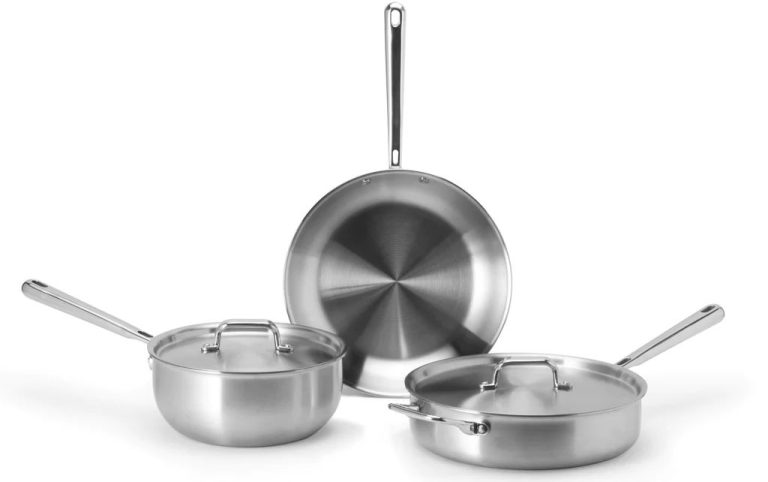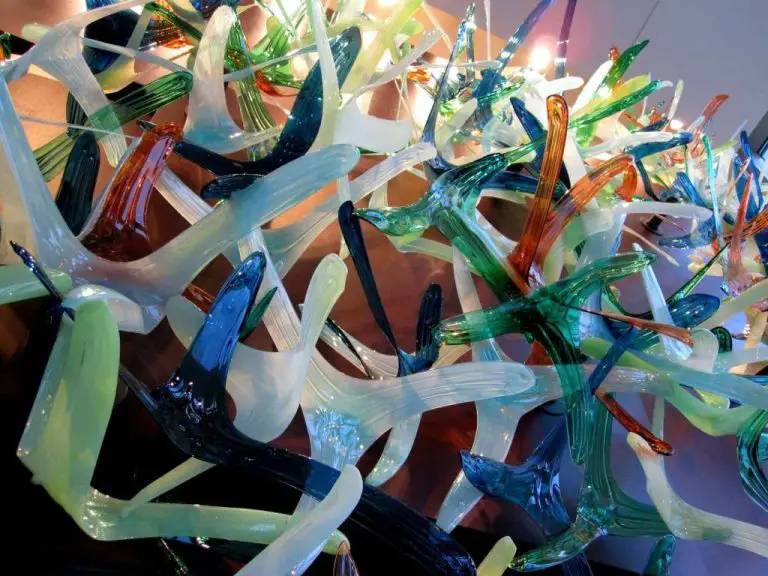How Do You Add Eyes To A Sculpture?
Adding eyes is a great way to bring sculptures to life. Whether your sculpture is made of clay, stone, wood, or metal, realistic or cartoonish eyes can give it personality and expression. Eyes can be added to sculptures big and small, simple or complex. Some common types of sculptures that are enhanced by adding eyes include:
- Clay figurines, masks, pots, and plaques
- Stone statues and carvings
- Wooden dolls, animals, reliefs
- Copper, brass, or silver figurines
- Wire mesh or paper mache creatures
- Found object robots made from assorted materials
There are many options for attaching or creating eyes, such as gluing protruding eyes, carving eye holes for inlay, or painting eyes directly on the sculpture. The important thing is to choose an eye style and method that suits the design, scale, and material of your sculpture. Planning the shape, size, color, and placement of the eyes early on will help bring them to life. This guide covers the main techniques for adding eyes so your sculptures make a lasting visual impression.
Plan the Eye Design
When adding eyes to a sculpture, it’s important to thoughtfully plan the eye design. Carefully consider the size, shape, color, material, and style of the eyes. The eyes should be appropriately sized and scaled to fit the sculpture. Select a shape that matches the sculpted subject – round eyes for animals or natural figures, almond-shaped eyes for human subjects.
Choose a material for the eyes that complements the sculpture medium. For example, glossy glass eyes, acrylic eyes, or wooden eyes. The color of the eyes should align with the sculpture’s subject – blue eyes for a light-colored animal, dark brown eyes for a human portrait. Finally, match the style of the eyes to the sculpture’s artistic style. Simple clean lines for modern sculpture, hand-painted details for folk art, etc.
Take the time to thoughtfully plan the eyes to integrate them into the sculpture in a cohesive and aesthetically pleasing way. The eyes are focal points that can make or break the finished piece.
Attach Protruding Eyes
One method for adding eyes to a sculpture is to attach protruding eyes that extend out from the face. This creates a more three-dimensional, lifelike appearance compared to flat or painted eyes.
To attach protruding eyes:
- Sculpt the eyes separately out of air dry clay, polymer clay, or epoxy clay. These materials are lightweight and easy to sculpt by hand into the desired eye shapes and colors.
- On your sculpture, sculpt out eye sockets that match the shape and size of the eyes you created. Make sure the sockets are deep enough for the eyes to be securely attached.
- Apply a strong craft glue or epoxy to the back of the eyes and press them firmly into the eye sockets on your sculpture. Hold them in place until the adhesive has fully hardened.
- If needed, use more adhesive around the edges of the eyes to fill any gaps and ensure they are completely adhered.
Protruding eyes add noticeable depth and realism. Just take care when sculpting and attaching them to achieve the facial expression and look you desire.
Add Flat or Painted Eyes
For a more two-dimensional or stylized look, you can paint the eyes directly onto the sculpture surface. This allows for a wide variety of creative options when it comes to eye shapes and designs.
First, decide on the eye shape you want. Simple circles or ovals work well for a cartoonish look. Or consider painting more realistically shaped eyes with rounded corners and a slight teardrop curve.
Next, choose your paint colors. Acrylic craft paints work great for adding flat, painted eyes. Go for solid colors or try mixing colors to match the eye color you envision. Black, white, and brown paints are good starter shades. You can also paint the iris and pupil separate colors for a more realistic effect.
Carefully paint the eye shapes using small paintbrushes. Allow the paint to fully dry before adding additional coats and details. Once satisfied with the eye color and shape, seal the painted eyes with a clear acrylic sealer. This protects the paint and gives the eyes a smooth, finished look.
For extremely realistic flat eyes, consider using decoupage. Cut out printed photos of eyes in the right shape and size. Adhere these paper eyes to the sculpture with decoupage medium. Apply multiple layers to seal and smooth the edges.
Make Holes for Inlaid Eyes
Inlaid eyes can add a striking realism to a sculpture. To add inlaid eyes:
Use a drill to make holes where you want the eyes to be placed. Drill the holes slightly smaller in diameter than the size of the eyes you’ll be inserting. This will allow the eyes to fit snugly into the holes.
Taxidermy eyes or glass marbles work very well for inlaid eyes. Make sure to choose eyes that match the scale and style of your sculpture.
If there are any gaps between the eyes and the sculpted eye holes, fill in the gaps with clay or epoxy putty before inserting the eyes. This will hold the eyes securely in place.
Once the eye holes are the proper size, insert the taxidermy eyes or marbles. The friction fit will hold them in place. If needed, you can add a small dab of glue around the edges of the eyes to reinforce. Make sure not to get any excess glue on the front of the eyes.
Choose Adhesives
Selecting the right adhesive is crucial for attaching eyes securely to your sculpture. The type of adhesive you use will depend on the weight of the sculpture and the type of eyes.
For lightweight sculptures like paper mache, air dry clay, or foam, opt for white craft glue. This classic glue dries clear, flexible, and strong. Craft glue forms a permanent bond between lightweight materials.
Attach flat back plastic eyes with two-part epoxy resin. Epoxy creates a glass-like finish that holds firm even on heavy sculptures. It won’t yellow or become brittle over time. Mix the resin and hardener as directed then apply a thin layer behind the eyes before pressing them into place.
For a flexible hold, use clear silicone adhesive. Silicone allows eyes to move slightly rather than cracking. It’s effective for materials like polymer clay. For even more flexibility, urethane resin remains elastic as it dries. This prevents the adhesive from tearing away from the sculpture.
Smooth and Finish
After the eyes have been attached to the sculpture, you will want to blend the edges to seamlessly integrate them. Lightly sand the edges of the eyes where they meet the sculpture using a fine grit sandpaper. The goal is to create a smooth transition without harsh edges or lines. Work slowly and carefully to avoid damaging the eyes or sculpture.
Next, inspect the area around the eyes and sand down any leftover adhesive, fingerprints, or rough spots. Use a sanding sponge for rounded areas and sandpaper for flat surfaces. Be gentle and take your time to avoid scratches. The area should feel smooth to the touch when you are finished.
Once satisfied with the smoothing, you can paint the eyes and sculpture for a cohesive look. Use acrylic craft paints and thin layers of paint to build up color. Allow each layer to dry fully before adding another. Blend the paint from the eyes into the sculpture softly. The transition of color should be subtle. Add a final sealant or varnish over the paint when finished to protect the surface.
Varnish and Seal
Applying varnish is an important finishing step to protect your sculpture’s eyes and any decorative paint from wear and damage. Acrylic varnishes work best for sealing eyes on polymer clay or air-dry clay sculptures. They provide a clear, protective coat without yellowing or affecting the color underneath.
Apply 2-3 thin coats of acrylic varnish, allowing each coat to fully dry before adding the next. Multiple thin layers provide better protection and durability than a single thick coat. Allow the final coat to cure for 24 hours before handling the sculpture.
Avoid using varnishes containing petroleum distillates like mineral spirits, which can interact poorly with polymer clay and cause stickiness. Stick with water-based acrylic varnishes only for polymer or air-dry clays. This ensures compatibility and provides optimal sealing and protection.
Troubleshooting
If your sculpture’s eyes become damaged or unsatisfactory, there are ways to troubleshoot and fix the issues. Here are some common problems and solutions when adding eyes to sculptures:
Fixing Loose Eyes
If protruding or inlaid eyes become loose over time, you’ll need to re-attach them. First, thoroughly clean the area around the eye socket and remove any old adhesive. For protruding eyes, apply a fresh dab of strong adhesive like epoxy or super glue to the back of the eye and firmly press it back into place. Be sure to hold it tightly for 30-60 seconds. For inlaid eyes, carefully apply adhesive into the ocular cavity and replace the eye, holding firmly until set.
Dealing with Cracks Near Eyes
Cracks around the eyes are common if the adhesive wasn’t allowed to fully cure or the sculpture material is brittle. Carefully apply acrylic gel or resin into the cracks to stabilize them before they spread. You can also drill small holes at the end of cracks to prevent further splitting. Sand and buff the area smooth when finished.
Redoing Unsatisfactory Eyes
If the eyes simply don’t look right, you may need to start over. Remove the unsatisfactory eyes and any adhesive, then thoroughly clean and sand the area to create a blank canvas. Sketch new eye designs and carefully cut, carve, or paint features that better match your vision. Take your time redoing the eyes until you achieve the desired look.
Be patient and willing to make changes if your sculpture’s eyes don’t turn out as planned. With some troubleshooting and adjustments, you can give your artwork lively, striking eyes.
Creatively Decorating Eyes
Adding a creative flair to the eyes can give your sculpture a unique personality. Consider using color, texture, and embellishments to make the eyes stand out.
Adding Color to the Iris
You can paint the iris of the eye different colors using acrylic paints. Try shades of blue, green, brown, or hazel for a realistic human eye effect. Or go bold with bright reds, purples, yellows or even patterns for a fun, artsy look.
Attaching Eyelashes
Glue small strands of natural or synthetic hair, feathers, leather, or foam around the eyes to mimic lush eyelashes. Cut the materials to different lengths and curl them with a bit of heat from a hair dryer or curling iron to add dimension.
Embedding Jewels or Glitter
Add some shine and sparkle to your sculpture’s gaze by gluing rhinestones, sequins, beads, or glitter around the eyes. You can form decorative patterns or write words with the materials. Apply a thin layer of decoupage or tacky glue and carefully press the embellishments into place.



